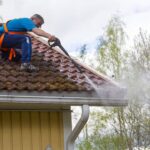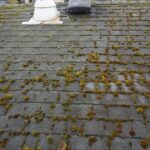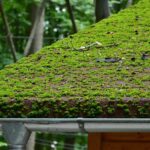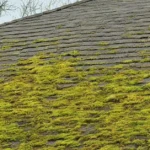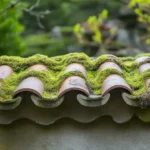Flat roofs are a popular choice for many homeowners due to their sleek design and cost-effectiveness. However, like any roofing system, they come with their own set of challenges. One common issue is the formation of roof blisters. Learning how to fix flat roof blisters is crucial for maintaining the integrity and lifespan of your roof. In this guide, we will explore the causes, prevention, and repair techniques for dealing with roof blisters.

Understanding Roof Blisters
Roof blisters are bubbles that form on the roof surface due to trapped air or moisture. They are usually found on flat and low-slope roofs where water can pool. These blisters can compromise the roof’s durability and lead to leaks if not addressed promptly.
What Causes Roof Blisters?
The formation of blisters is typically a result of improper installation or inadequate ventilation. When moisture gets trapped between layers of roofing material, it expands under the sun’s heat, creating blisters. Poor adhesion and temperature fluctuations can also contribute to this problem.
Identifying Roof Blisters
Before you can fix roof blisters, you need to identify them. Look for raised areas on the roof surface, similar to bubbles. These are often soft to the touch and can vary in size. Regular inspections are key to catching these issues early.
Inspection Techniques
Performing a thorough inspection involves walking on the roof and visually examining the surface. Use binoculars to inspect hard-to-reach areas. Look for signs of blistering, such as cracked or peeling surfaces, and note their locations for repair.
Tools Required for Repair
Repairing roof blisters requires specific tools and materials. Some essential items include:
- Utility knife
- Roofing cement
- Roofing fabric
- Brush or roller
- Protective gloves and goggles
Step-by-Step Repair Process
Once you have identified the blisters, follow these steps to repair them:
Step 1: Cut the Blister
Using a utility knife, carefully cut the blister along its edges. Ensure the cut is deep enough to allow moisture to escape, but avoid cutting through the roof membrane.
Step 2: Dry the Area
Allow the area to dry thoroughly. Use a heat gun if necessary to expedite the drying process. This step is crucial to prevent moisture from being trapped again.
Step 3: Apply Roofing Cement
Fill the cut area with roofing cement using a brush or roller. Ensure the cement spreads evenly to cover the entire blistered area.
Step 4: Reinforce with Roofing Fabric
Place a piece of roofing fabric over the cemented area. This reinforcement provides additional strength and durability to the repair.
Step 5: Apply a Second Layer of Cement
Cover the fabric with another layer of roofing cement. Smooth it out to ensure proper adhesion and a seamless finish.
Preventing Roof Blisters
Prevention is always better than cure. To avoid roof blisters, ensure proper installation and ventilation of your roof. Regular maintenance, including cleaning and inspecting for potential issues, is essential. You can learn more about roof inspection techniques to help you identify problems early.
Regular Maintenance Tips
Conduct regular roof inspections, especially after extreme weather conditions. Clean debris and clear blocked drains to prevent water accumulation. For more information on maintaining your roof, check these maintenance tips.
When to Call a Professional
While DIY repairs are possible, some situations require professional intervention. If the blisters cover a large area or if you’re unsure about the repair process, it’s best to consult a roofing expert. They have the skills and tools necessary to perform comprehensive repairs efficiently.
Benefits of Hiring Professionals
Professionals can provide a thorough assessment and recommend the best course of action. They also ensure that repairs comply with industry standards, offering peace of mind and a more durable solution.
Cost Considerations
The cost of repairing roof blisters varies based on the extent of the damage and the materials used. DIY repairs are more budget-friendly but may require more frequent maintenance. Hiring professionals may incur higher upfront costs but often results in long-term savings through durable repairs.
DIY vs. Professional Repair Costs
DIY repairs typically cost less, as you only need to purchase materials. However, professional repairs, though more expensive initially, often lead to fewer recurring issues, saving money in the long run.
Conclusion
Understanding how to fix flat roof blisters is essential for maintaining your home’s roof. Regular inspections, proper maintenance, and timely repairs can prevent further damage and extend your roof’s lifespan. Whether you choose to tackle the repairs yourself or hire a professional, taking action promptly is key to preserving the integrity of your flat roof.

FAQ
What causes roof blisters?
Roof blisters are caused by trapped air or moisture between roofing layers, often due to poor installation or inadequate ventilation.
Can I repair roof blisters myself?
Yes, with the right tools and techniques, you can repair small roof blisters yourself. However, for extensive damage, hiring a professional is advisable.
How can I prevent roof blisters?
Ensure proper installation and ventilation of your roof, conduct regular inspections, and address issues promptly to prevent blisters.
This article contains affiliate links. We may earn a commission at no extra cost to you.




